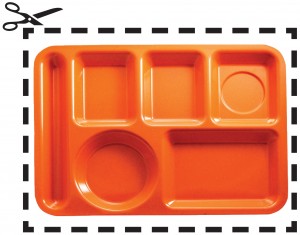 During the past couple of years, colleges have undertaken a variety of initiatives to promote sustainability on their campuses. Selling local produce and other foods in campus cafes, providing free CFLs, and the option to purchase green energy to power dormitory rooms are just a few examples of the ways in which colleges have sought to be greener. However perhaps the fast growing trend on college campuses is the banishment of the humble food tray, or trayless dining. Now, instead of providing trays for students to load with plates, glasses, and silverware, many cafeterias have done away with the large plastic slabs. Trayless dining discourages food waste, conserves water, and decreases energy use while saving colleges money.
During the past couple of years, colleges have undertaken a variety of initiatives to promote sustainability on their campuses. Selling local produce and other foods in campus cafes, providing free CFLs, and the option to purchase green energy to power dormitory rooms are just a few examples of the ways in which colleges have sought to be greener. However perhaps the fast growing trend on college campuses is the banishment of the humble food tray, or trayless dining. Now, instead of providing trays for students to load with plates, glasses, and silverware, many cafeterias have done away with the large plastic slabs. Trayless dining discourages food waste, conserves water, and decreases energy use while saving colleges money.
Some campuses have already found that trayless dining cuts food waste up to 50%. The thinking is that, without the convenience of a tray, diners are less likely to get up for seconds or thirds that they won’t be able to finish. Forgoing trays also saves thousands of dollars in energy that would be expended sanitizing trays.
Of course, one might imagine that there would be some resistance to removing the trays from cafeterias; carrying an entree, salad, silverware and beverage without one requires considerable skill. Consequently many colleges have decided to ease their students into the practice by banishing trays from select dining areas, or only on “trayless Tuesdays.” It turns out though, that some students prefer the new system, stating that it creates a less institutional, more “homey” atmosphere in the dining hall.
The Sustainable Endowments Institute (SEI), a research organization located in Cambridge, tracks and compares environmental practices at the 300 colleges and universities with the largest endowments. Of the institutions studied, the SEI reports that 126 of them have cut down on the use of trays, if not eliminated them completely.
With increasing food costs, compounded by contracted endowments, the trayless dining trend will most likely become even more popular this fall.


